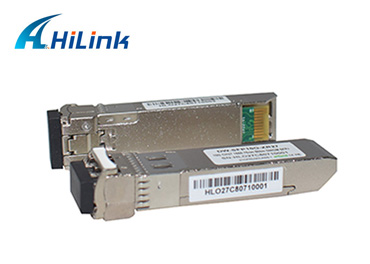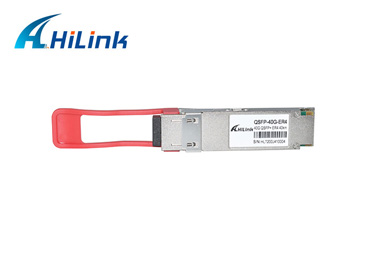Is My SFP Working?
Feb. 16, 2023
Have you ever tried to plug an optical transceiver into an SFP+ port to discover that the connection didn’t work, i.e. traffic was very slow or there was no data transmission at all? Did you manage to diagnose the problem and find a resolution? There are several possible reasons for failure. SFP manufacturer has listed the five most common ones.
First, let's briefly review what SFP and SFP+ stand for. SFP - short for "Small Form Factor Pluggable" - is a compact, hot-swappable device used to connect network devices such as switches, routers and servers. In this article, we will focus on optical transceivers, which, as their name suggests, can carry 1 Gbps of data over single-mode or multimode fiber. SFP+ is an enhanced version of SFP, supporting data rates of up to 10 Gbps. Now, the difference between SFP and SFP+ is an important one when it comes to troubleshooting: transceivers are not always interchangeable.
10G QSFP+
TIP 1: Check whether you’re using SFP or SFP+ transceivers and slots
SFP and SFP+ modules look exactly the same. And as they have the same size, your SFP transceiver will fit seamlessly into an SFP+ switch port and vice versa. However, the connection won’t work as you expect it to. Or, worse even, it won’t work at all. If you plug an SFP device into an SFP+ port, the speed will be locked at 1 Gbps. Plugging an SFP+ module into an SFP port delivers no results at all, as the 10G transceiver can never auto-negotiate to 1Gbps.
Tip 2: Ensure that the wavelengths at both ends of the SFP are identical.
Data transmission means that data is sent from one end to the other. The SFP+ transceiver at one end converts the electrical signal into an optical signal. A built-in laser transmits the light through the fibre to the other end. Here, a photodiode converts the light back into an electrical signal. To ensure that the SFP+ at the other end can do this, the SFP at both ends should support the same wavelength. For example, a 1310nm transceiver cannot talk to an 850nm transceiver.
→ Here, too, look at the specs on the sticker of the modules or check out the details on the manufacturer’s website. Don’t look into the laser light! Use your smartphone camera if you want to verify that light is coming out of the cable.
100G 40KM QSFP28 ER4
TIP 3: Are both ports compatible with your SFP+ modules?
Even when using compatible SFP+s at both ends of the right cable, it is key that both of your devices support SFP+. Make sure that the SFP+ ports on your devices are compatible with the SFP+ modules you want to use. Some brands allow you to use only their own modules.
TIP 4: Use the correct single or multi-mode fiber cable
Still in trouble even though you are sure you did not mix up SFP and SFP+ and are supporting the same wavelengths at both sides? If so, then verify if the optical transceivers on each end use the same fibre type, i.e. for single-mode or multi-mode fiber. And use the corresponding fiber cable.
Single-Mode Fiber (SMF): featuring a narrow core (typically around 9μm), SMF allows only a single-mode (or “ray”) of light to propagate. It is mostly used to transmit data over long distances (max 2km – 120km).
Multi-Mode Fiber (MMF): as MMF has a much wider core (typically 50μm or 62.5μm), it allows multiple modes of light to propagate. The common MMFs are used for short-distance transmissions (max 100m – 500m).
The type of fiber can be identified by the use of standardized colors on the outer jacket:
TIP 5: Is your optic cable in good shape?
Fiber optic cables are exceptionally vulnerable. Dust, dirt, or tampering might cause physical damage. So, if you’re experiencing problems when connecting devices, check the connector, the module, and the module slot to make sure they’re not damaged.
To avoid physical damage, avoid extreme bends in fiber optic cables when storing them, and put dust caps on your cable ends if you disconnect them.
In summary, make sure that you know what you are doing when plugging in SFP+ modules and fiber optic cables! It may look simple, but transceivers and slots are not always compatible. Always check the specs on the sticker of your transceiver/the slot, or verify the details on the manufacturer’s website. Only when done right, using fiber optic cables that are in good shape, will you be able to transmit data at the desired speed!













